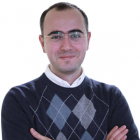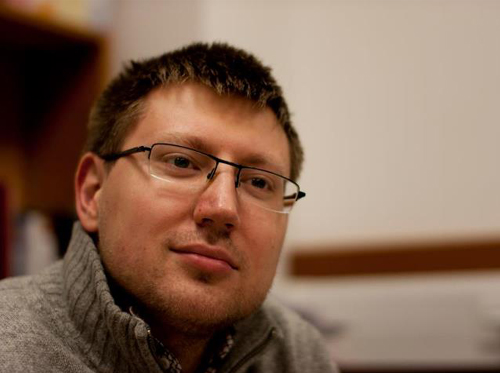Mihran Vardanyan is a cosmologist at Oxford University’s Astrophysics Department. He was born in Yerevan in 1985. He studied at the Faculty of Physics of Yerevan State University and then entered the University of Oxford. His is engaged in interpretation of the cosmological data. Mihran’s main goal is to develop new statistical techniques to reveal the nature of dark energy as well as to optimize future cosmological surveys and survey strategies.
As you know, parents in Armenia have big influence on their children in choosing future profession. My case is somewhat different. My parents always said I could choose any profession I wanted but I have to excel in it. My uncle is a famous micro surgeon in Russia, and I always wanted to become a doctor. Then I understood that my future is connected with computer modeling and began to focus on computers, mathematics and physics. Entering the university I still pondered – mathematics of physics. Finally I chose physics and I never regretted!
When we studied programming during the first year in university, the professor noticed my passion towards it and offered a job at the Institute of Physics. So, I began to work there and understood that my area is the theoretical physics. I chose a supervisor at the University who was engaged in numerical methods: solution of complex tasks by means of computers.
At that time, Mihran was invited to a conference in Dubna, Russia’s largest Nuclear Physics Research Center. He got acquainted with many astrophysicists there and realized that space- the mechanisms and the logics of space- is full of challenges. After returning to Armenia, Mihran realized that he wanted to study astrophysics.
In the American University of Armenia he found a book entitled “Big Bang” by Joseph Silk, a famous Professor at the University of Oxford. After reading, it Mihran decided to study at Oxford.
Photo from Mihran Vardanyan’s archive
I had several offers to continue studies in Masters at that time, also from Dubna. But I decided to apply to Oxford. I have been interviewed via phone and they suggested me applying not for Masters but for PhD. They also proposed an interesting project to me. I entered the University of Oxford but the date of receipt of scholarship applications has already passed, so I postponed my studies until next year. During that period, they provided me with the necessary literature, so that I could work on their project related to numerical methods and analysis of information obtained from space from Yerevan.
Next year, Mihran was interviewed by a man working in the team of Professor Joseph Silk and Mihran’s enormous desire to study in his class became a reality.
After a year in Masters at YSU, I left to study for PhD in Oxford. I began to work in Silk’s team on advanced statistical methods. We examined new mathematical methods to more precisely determine the links between all data. We also worked on telescope optimization which allowed making forecasts of future results. 
Photo from Mihran Vardanyan’s archive
We published an article on curvature of the Universe in the Journal of the Royal Astronomical Society, where we made many forecasts and introduced the processed data. The article became very famous as it was marked by British New Scientist Journal. We later published two more articles, one of which was featured in MIT Technology review.
I am asking Mihran what’s the most important thing for him on the path he has chosen and answers to what questions is he looking for in space?
I am impressed by the possibility of achieving maximum results using minimum resources. Science is an expensive thing and in current financial conditions it’s vital to get maximum important data, which will provide ground for future discoveries, using minimum resources.
Secondly, physicists and astrophysicists always throw new challenges to other specialists, especially engineers. Technologies, born as a result of solving these complex tasks, are used in everyday life.
Mihran and his team published an article which as caused huge interest in the scientific world. Cosmology has a so-called Hubble’s Horizon that consists of the galaxies and other matter that humans can in principle observe from Earth in present day. Objects beyond that are expanding away from us much faster than the speed of light. Mihran and his team have come up with a new complex method of analyzing all previous research and found out that the space is 250 times bigger than visible universe.
Photo from Mihran Vardanyan’s archive
Until most recently, cosmology has not been based on serious facts. Only over the last 60 years with the development of technologies and computers we can receive data on which our theories are based. Thus, cosmology is entering the stage of exact calculations. We need new methods today to process more data to understand the structure of Universe. The most impressive is that you realize how small and insignificant you are in comparison with the Universe, and you are trying to understand its structure and how it works and eventually you begin to realize something.
In September 2012, Mihran organized a scientific expedition to Qarahunge (Armenia) which was attentively followed by Armenian public and media.
The University of Oxford has a so-called Expedition Council which enables the students to organize scientific expeditions to various countries. I initiated such an expedition and the University approved it. We also appealed to the Royal Geographic Society and were allowed to use their name. The expedition was financed partially by these two organizations and partially by us.
The expedition had two goals: to draw the attention of the international scientific society to Qarahunge and conduct preparatory works for future laser scanning and creation of a 3D map of the area. After the expedition we provided all the materials to History Channel which dedicated one episode to Qarahunge. It’s a good “advertising” both for our country and for this historical monument.
Photo from Mihran Vardanyan’s archive
A group of scientists has recently carried out a laser scanning at Stonehenge in England and created its 3D model, which paves way to new discoveries. I hope we can do it in Qarahunge too one day, though it requires huge financial investments.
In 2007, Mihran founded the Oxford Armenian Society and opened an Armenian library there. The Society exists to cultivate an understanding and appreciation of Armenian culture, heritage and history through cultural, educational, and social activities. It organizes meetings with famous Armenians and functions till today.
Mihran continues to work on his numerous projects related to the elaboration of new statistical space modeling methods, prediction of the results of future experiments and possible borders of curvature of the Universe. Mihran has an enormous desire to deepen his ties with Armenia.
I want Armenia to become a vital part of the scientific world: not only the Armenians who become famous in various spheres as separate individuals, but Armenia itself as a state. I would like to establish more ties with Armenia, involve local specialists in various programs. I would like to implement an experience exchange program in England for young Armenians specialists. I do see this potential among our youth.
Mihran Vardanyan with Nobel Prize laureate George Smoot
I think the government of Armenia should pay more attention to science. These must not necessarily be grand projects requiring huge investment. For example, they can develop computer technologies which don’t require big recourses, but mainly a scientific work and human resource. Denmark, for example, has chosen mathematics as a concrete branch and is doing everything possible to develop it. I think this is the right path. They can choose one branch in Armenia too and develop it.
I also think it’s important to work out programs which will stimulate young people to engage in science from school. For example, open a scientific museum and present some scientific experiments in an interesting way. It would be also brilliant if all the schools could visit Byurakan or a special observatory to monitor the sun and other stars and planets.
On the day of the interview, Mihran’s iCosmos project –a Cosmology Calculator, won the OxTalent 2012 IT Innovation Prize. We congratulate Mihran and wish him new achievements.
Aram Araratyan
















Comments
Dear visitors, You can place your opinion on the material using your Facebook account. Please, be polite and follow our simple rules: you are not allowed to make off - topic comments, place advertisements, use abusive and filthy language. The editorial staff reserves the right to moderate and delete comments in case of breach of the rules.